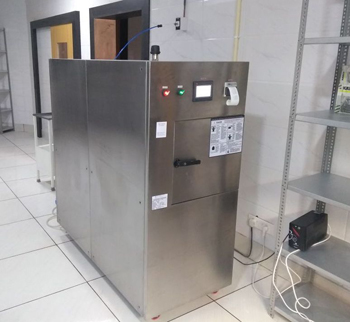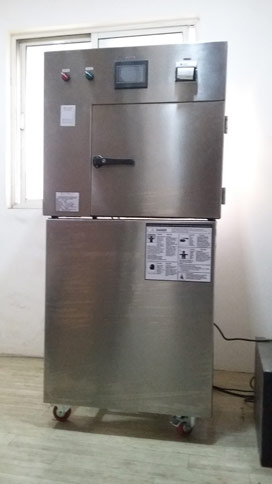A hospital sterilizer ensures the sterilization of medical instruments and materials used in hospitals for everyday surgeries, procedures, and patient services. This sterilization is the process of destroying all living organisms on an item and is the main task of hospital sterilization. Sterilizing equipment is a vital element of modern medical care as patients and the hospital and comes in contact with the surgical instruments day in and day out.
Benefits of a Hospital Sterilizer
To avoid health-associated infections (HAI) amongst patients and the staff, germs need to be destroyed to reduce the spread of infections. The benefits of sterilizing medical equipment are-
- It eliminates the scope of pus, blood, or foreign particles that could lead to any dangerous type of complication for the next patient while the medical practitioner uses any instrument.
- It helps to decrease the bio-burden that is the non-sterilized bacteria living on any surface.
- Any breeding ground for surviving germs is eliminated.
- The high precision tools and expensive instruments do not have a corrosion-related problem.

Steps and Care while Sterilizing Medical Equipment
- Cleaning- The first step involves cleaning before any high level of sterilization
- Disinfecting- This step can involve liquid chemicals to kill the spore-forming bacteria
- Sterilizing- Several methods could be employed to sterilize disease-causing microorganisms like bacteria and spores.
Methods to sterilize hospital equipment and tips to handle them
- Steam Sterilization– The steam sterilization is the most commonly used as well as a safe and budget-friendly option. Care is to be taken that the medical device to be sterilized is not a heat-sensitive one. These are also called autoclaves and their working principle is that they apply intense pressure and heat to destroy any microorganism on the surface of an object. While opting for this sterilizing hospital equipment, a proper decontaminant is used to clean the outside surface and any damage may be prevented by wrapping the instruments beforehand. Another tip is to let enough space between each piece to allow for free movement.
- Dry Heat Sterilisation– Dry heat is a strong but slow technique and used where steam cannot penetrate adequately or may destroy it. This sterilization equipment for hospitals uses high temperature and time. It may not be suitable for all materials but still reliable for materials that can sustain 340 degrees F to kill microbial life.
- Chemical Sterilization– Prepared chemical solutions are used in this technique for hospital sterilizers. A few chemicals used here are-
- Ozone
- Ethylene Oxide
- Hydrogen Peroxide
- Bleach

These chemicals can kill a broad range of pathogens and once the submerged chemical dries the equipment is rinsed off. This may not be suitable for biological materials fiber optics and highly heat-sensitive materials.
- Plasma Gas Sterilisers– This method is costly but effective for moisture-sensitive tools. It is safe as it uses low-temperature hydrogen peroxide gas plasma inside a chamber to kill fungi and viruses. Also, the remainders of this process are oxygen and water which are safe for the human body.
- VHP Sterilisers (Vaporised Hydrogen Peroxide) – This procedure removes humidity from an enclosure and a generator injects VHP to reach an ideal level of concentration for sterilizing. This sterilizer machine for hospitals breaks down the vapour into eco-friendly elements and has a low cycle time which can sterilize high volume batches.
- UV Sterilisers– These hospital-grade UV sterilizers use ultraviolet light systems for rapid cleaning of bacteria and viruses and useful when both the air and solid surfaces need to be sterilized.
The hospital sterilization equipment manufacturers aim at satisfying the needs of any hospital or medical care to maintain a sterile environment. With these hospital grade sterilizers, patient and staff safety is maximized and turnaround time for reusable equipment is reduced.





